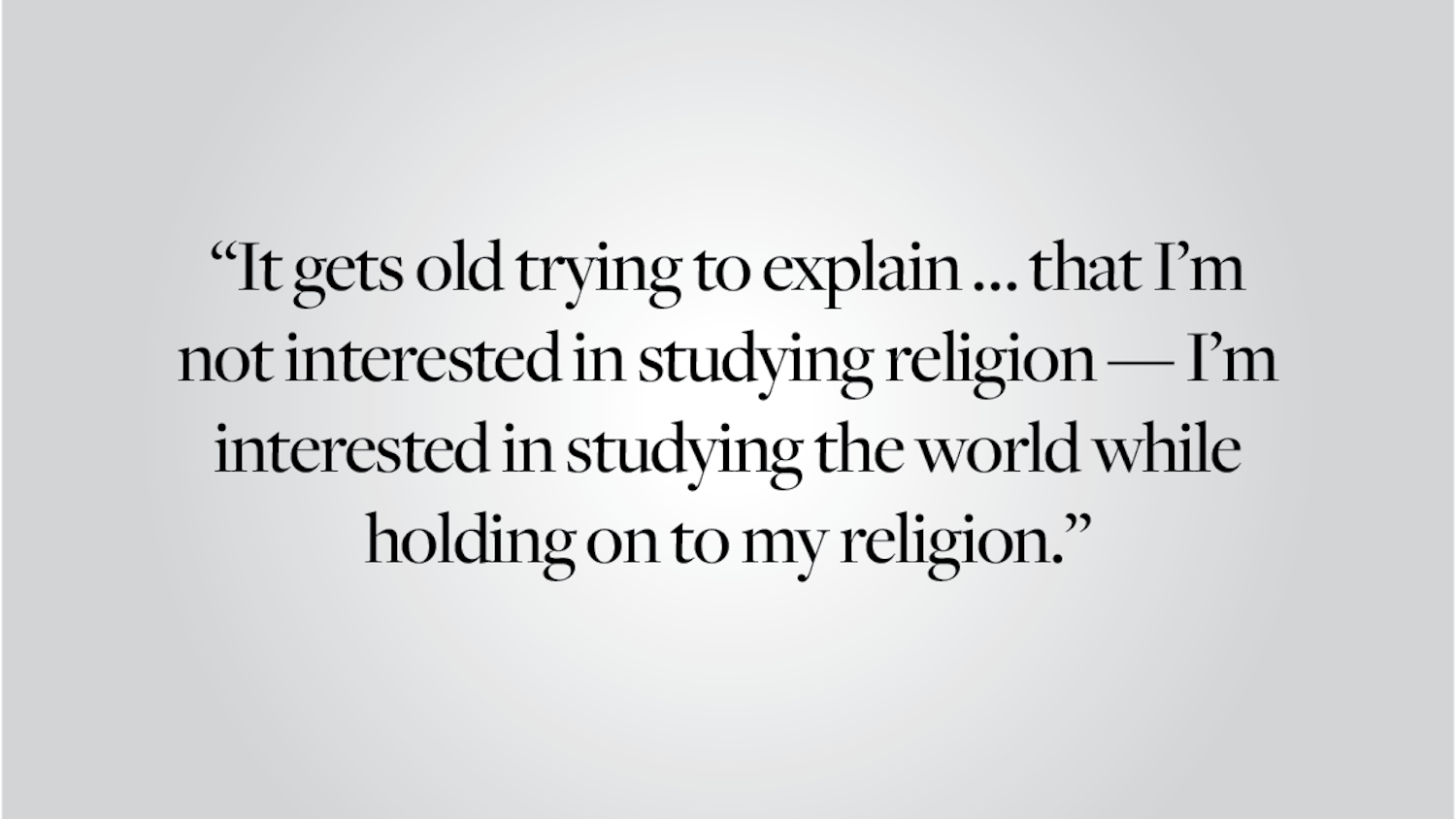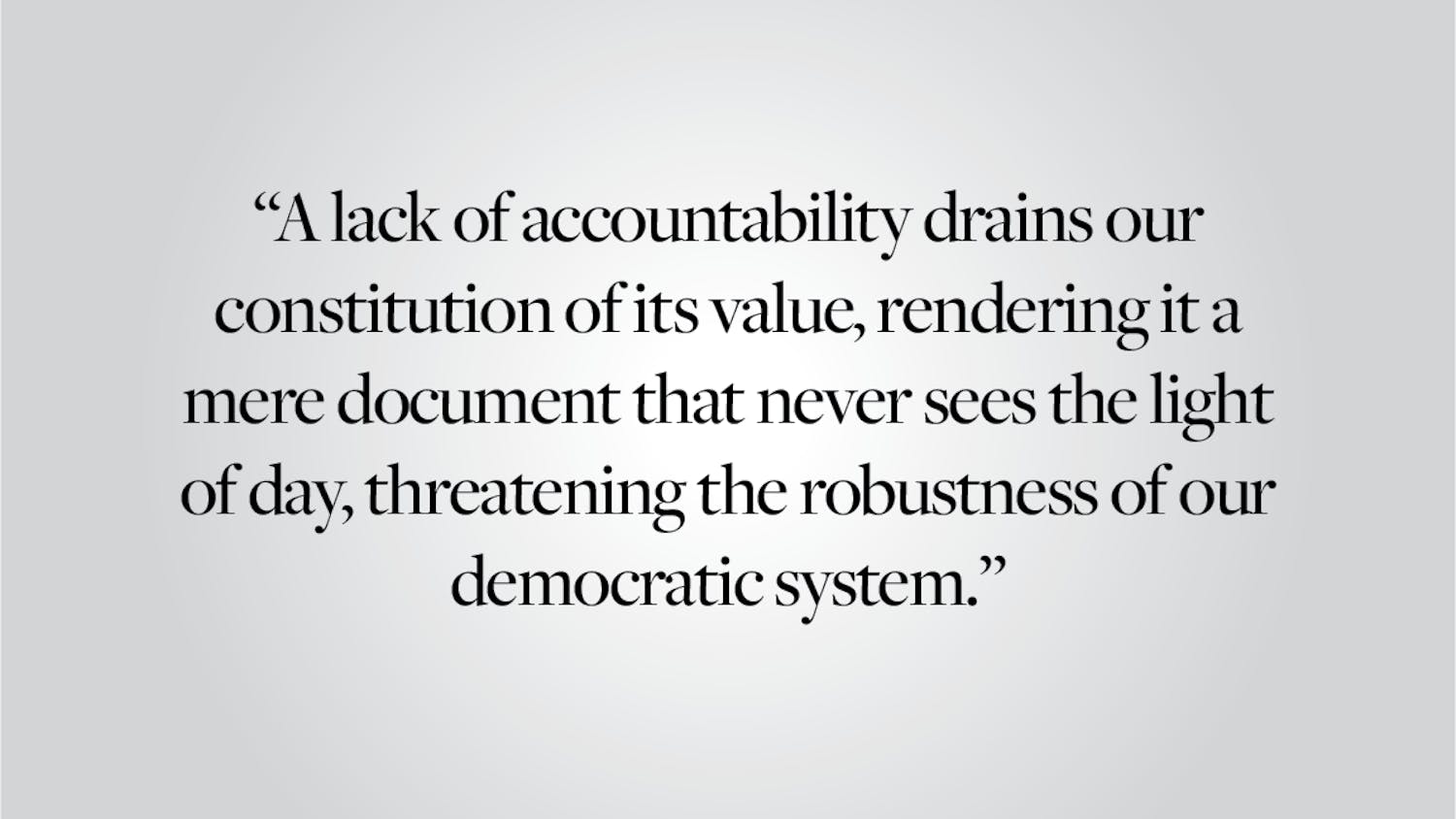The Herald reported on Provost Richard Locke’s P’17 new financial plan for the University Oct. 5. In the article, ostensibly about Brown’s fiscal situation, were several comparisons to what Locke calls our peer institutions. One of the purposes of Locke’s plan, according to the article, is to further Brown’s “emergence as an international research university.” That is, to make us more like our peers.
And who are those peers? The article named Dartmouth, Yale and the Massachusetts Institute of Technology. Yet, by two key metrics, those universities are objectively not our peers.
First, those universities are already more research- and graduate-oriented than Brown. Brown’s total enrollment contains a lower percentage of graduate students — 23 percent — than Dartmouth’s (32 percent), Yale’s (56 percent) or MIT’s (60 percent). Brown is more dependent on undergraduate tuition for revenue, and it shows in our enrollment balance.
More importantly, Brown’s endowment per student (undergraduate and graduate) gets blown out of the water by that of our supposed peers. I don’t mean to sound ungrateful for Brown’s $362,000 per student, but that’s only half of Dartmouth’s $715,000 per student, according to Dartmouth’s endowment value and enrollment. MIT has three times as much: $1.16 million, according to its endowment value and enrollment. Yale commands over $2 million of endowment for every person enrolled. In purely monetary terms, we are as much a peer of these institutions as David was a peer of Goliath.
This is not to say that these institutions are not our peers in terms of the quality of their faculties, students or campuses. But Brown’s faculty and administration should reconsider Locke’s financial plan, which seeks to emulate institutions with several times Brown’s resources.
Furthering a university’s emergence as an international research institution is a costly undertaking. This year’s budget is balanced, but Locke claims the University will face a peak $32 million operating deficit out of a $1 billion budget. In my view, this deficit is a result of Locke and President Christina Paxson’s P’19 fiscal priorities: the endowment, construction and research expansion.
Locke announced that the University will reduce the amount it withdraws from the endowment from 5 percent to 4.5 percent. Though Locke said the University aims to grow the endowment such that the difference in proportion minimally affects the dollar value of these withdrawals, 5 percent is a reasonable withdrawal rate in comparison with many of our peers — Yale withdraws 5.2 percent annually — and even philanthropic foundations do so.
Another deficit driver is construction: most notably the new engineering research building, which is expected to cost $88 million up front and several million dollars a year in upkeep. There’s also the decision to renovate half the Rockefeller Library’s second floor into a graduate-only work space.
In the article, Locke announced the goal of increasing Brown’s graduate programs to a total of 120 master’s students and 95 PhDs. While master’s and professional students pay tuition, PhD candidates receive a stipend and benefits from the University. If some of these research projects win federal funding, they become net assets to Brown, but outside grants may not fully cover the costs of research expansion.
To pay for all this, Locke asked for a 5 percent year-over-year tuition increase at some point, higher than the normal 4 percent hike. This year, Brown is asking even more from students’ families to fund its emergence as an international research university — money that could otherwise go to financial aid.
If Locke and Paxson are looking to enhance Brown’s reputation, they would be well served to look to Henry Wriston, Brown’s president from 1937 to 1955, who raised our profile more than any other administrator in Brown’s history. Wriston coined the term “university-college” and committed Brown to its residential undergraduates. That, along with changes in curriculum and admission policies, raised Brown’s national status.
Brown’s best assets are its campus, the quality of its faculty and the open curriculum. Brown should prioritize its university-college rather than chase the accomplishments of its peers. Wriston once wrote that “the imitativeness of institutions has been the undoing of many,” and the current administration would be well advised to learn this lesson.
Paxson has named the core agenda of her presidency “Building on Distinction,” yet she misunderstands what Brown’s distinction truly is. Our distinction is being a university-college built on the quality of our undergrad experience, not being a relatively poor, relatively less selective and relatively less prestigious research university.
Duncan Weinstein ’17 can be reached at duncan_weinstein@brown.edu. Please send responses to this opinion to letters@browndailyherald.com and other op-eds to opinions@browndailyherald.com.




